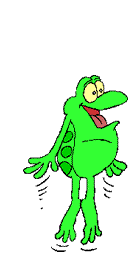


Preview
Material for Exam 1 - Fall 2004 |
|||||||||||||||||||||||||||||||||||||||||||||||||||||||||||
|
Frogs (poikilotherms) come in a variety of sizes and colors. The elusive and shy goliath frog, Conraua goliath, is the largest known frog. It reaches a body length of 30.5 cm (12 in) and if you measure from the tip of the nose to the back toes they average 91 cm (3 ft). Average weight is around 3.2 kg (7 lb). These frogs are found in association with the fast moving mountain streams in west central Africa. The tadpoles (young frogs) eat only vegetation found in the streams. However, adult goliath frogs feed on a variety of food items including, insects, fish and other amphibians. At the other extreme are 2 tiny frogs that have average body lengths of around 1 cm (3/8 in). Eleutherodactylus iberia, discovered in Cuba in 1996, is the smallest frog in the Northern Hemisphere and Psyllophryne didactyla, found in Brazil, holds the record for the Southern Hemisphere. Frogs are one of the
better leapers on the planet. They can launch themselves over 20 times
their own length.
About 10 years ago many goliath frogs were exported to the US to be housed
in zoos or used in jumping
contests (with a notable exception, a short-lived fad). |
|||||||||||||||||||||||||||||||||||||||||||||||||||||||||||
 source source |
|||||||||||||||||||||||||||||||||||||||||||||||||||||||||||
 source source |
|||||||||||||||||||||||||||||||||||||||||||||||||||||||||||
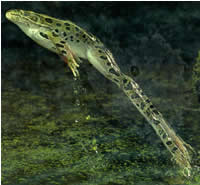 source source |
|||||||||||||||||||||||||||||||||||||||||||||||||||||||||||
|
|
|||||||||||||||||||||||||||||||||||||||||||||||||||||||||||
 source source |
|||||||||||||||||||||||||||||||||||||||||||||||||||||||||||
 source source |
|||||||||||||||||||||||||||||||||||||||||||||||||||||||||||
| The recent Summer Olympic Games in Greece featured some outstanding track-and-field athletes, including those who participated in the marathon. The hot weather certainly tested the stamina of the athletes during this event. All the trainers asked their runners to consume large amounts of glucose-rich Gatorade prior to the race. Numerous physicians were posted along the route in the event any athletes suffered from heat-related illnesses. | |||||||||||||||||||||||||||||||||||||||||||||||||||||||||||
|
|
|||||||||||||||||||||||||||||||||||||||||||||||||||||||||||
 |
|||||||||||||||||||||||||||||||||||||||||||||||||||||||||||
| In an old Star Trek episode, a giant single cell resembling an amoeba engulfed the 23rd century starship Enterprise. | |||||||||||||||||||||||||||||||||||||||||||||||||||||||||||
|
|
|||||||||||||||||||||||||||||||||||||||||||||||||||||||||||
| A scientist wondered whether salsa (made mostly from tomatoes, onions, cilantro and green chili peppers) would prevent growth of Salmonella, a bacterium that causes food poisoning. He grows Salmonella populations (colonies) on nutrient agar (a jelly-like material that contains nutrients for the bacteria) in plastic plates. That much is standard procedure in all his experiments. In a preliminary experiment, he observed that the juice from the ground up salsa prevented growth of the bacteria in the plates in the laboratory. He wanted to determine what part of the salsa caused this effect. He set up an experiment in which he added bacteria to each plate containing the components of salsa (as well as one with no juice) as indicated in the table below. He counted the colonies of bacteria in the plates at the end of his experiment and recorded the following information. | |||||||||||||||||||||||||||||||||||||||||||||||||||||||||||
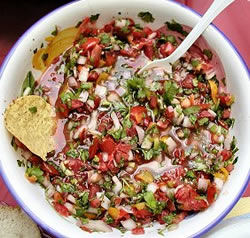 source |
|||||||||||||||||||||||||||||||||||||||||||||||||||||||||||
 source |
|||||||||||||||||||||||||||||||||||||||||||||||||||||||||||
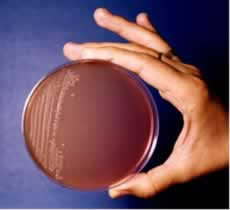 |
|||||||||||||||||||||||||||||||||||||||||||||||||||||||||||
|
|||||||||||||||||||||||||||||||||||||||||||||||||||||||||||
|
|
|||||||||||||||||||||||||||||||||||||||||||||||||||||||||||
 source source |
|||||||||||||||||||||||||||||||||||||||||||||||||||||||||||
| Gifblaar is a plant that grows in South Africa. European cattle that were brought to South Africa in the 1830s ate the leaves of the plant and died. Scientists later learned that the plant produces fluoroacetic acid, which interferes with an enzyme in the Krebs cycle. | |||||||||||||||||||||||||||||||||||||||||||||||||||||||||||
|
|
|||||||||||||||||||||||||||||||||||||||||||||||||||||||||||
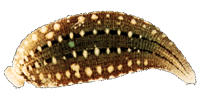     source |
|||||||||||||||||||||||||||||||||||||||||||||||||||||||||||
| An Oklahoma leech family that lives safely in a freshwater pond is invited to visit some distant marine worm relatives who live in the Atlantic Ocean. The relatives tell them how good the food is and what a wonderful time they could have in the water. The Oklahomans catch a ride east and on their first day with the relatives, the smallest (and youngest) leech rushes out into the saltwater of the ocean. The parent leeches are worried about their offspring in this new place and rush out to bring the young leech back to shore. The leeches are poikilotherms. | |||||||||||||||||||||||||||||||||||||||||||||||||||||||||||
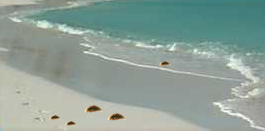 |
|||||||||||||||||||||||||||||||||||||||||||||||||||||||||||
|
|
|||||||||||||||||||||||||||||||||||||||||||||||||||||||||||
| Dr. Slim N. Trim is looking for a new weight loss drug by extracting chemicals from plants and testing their effect on cellular respiration. He tests the effects of one of these compounds, labeled as C2468, on cells extracted from mice. To each experimental group, he adds C2468 to the solutions in which the cells are grown (growth solutions). After five minutes, he measures the levels of pyruvate, ATP, and glucose present or remaining in the cells. He finds the following: | |||||||||||||||||||||||||||||||||||||||||||||||||||||||||||
 |
|||||||||||||||||||||||||||||||||||||||||||||||||||||||||||
| Dr. Trim correctly concludes that in the presence of C2468 the cells continue to use up the glucose as usual. | |||||||||||||||||||||||||||||||||||||||||||||||||||||||||||
|
|
|||||||||||||||||||||||||||||||||||||||||||||||||||||||||||
 |
|||||||||||||||||||||||||||||||||||||||||||||||||||||||||||